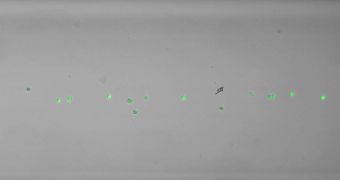Using magnets and magnetic fields, scientists managed to get mice and frogs levitating in their boxes, just like trains manage to levitate above their tracks in Japan. Now scientists managed to harness the magnetism power to much more subtle objects in order to levitate single cells too.
According to the New Scientist, a team at Stanford University managed to develop a new way of making cells levitate. They soak the cells in a magnetic solution before putting them between two neodymium magnets. The cells will float at a height above the lower magnet based on their density, the more mass they have the lower they will sit.
Until now different types of cancer cells have been levitated, but the process should work just as well with other, different types of cells, as blood cells can vary in density and based on their purpose in bloodstream.
Interestingly, researchers could watch single cells die, by getting slightly denser in the process. They could see breast cancer cells die from acid bath, and yeast cells die from antibiotics and antifungals. Researchers believe cell magnetism could help a lot testing new drugs and diagnosing diseases.
However, as scientific methods can influence scientific results, researchers still debate how much the magnetic substance can change cells density, as such issues can alter dramatically the experiment's results.
In the end, what's truly important is that the Stanford team can separate out cells, which proves that the device is working, and density can really play a part in determining a cell's life.

 14 DAY TRIAL //
14 DAY TRIAL //